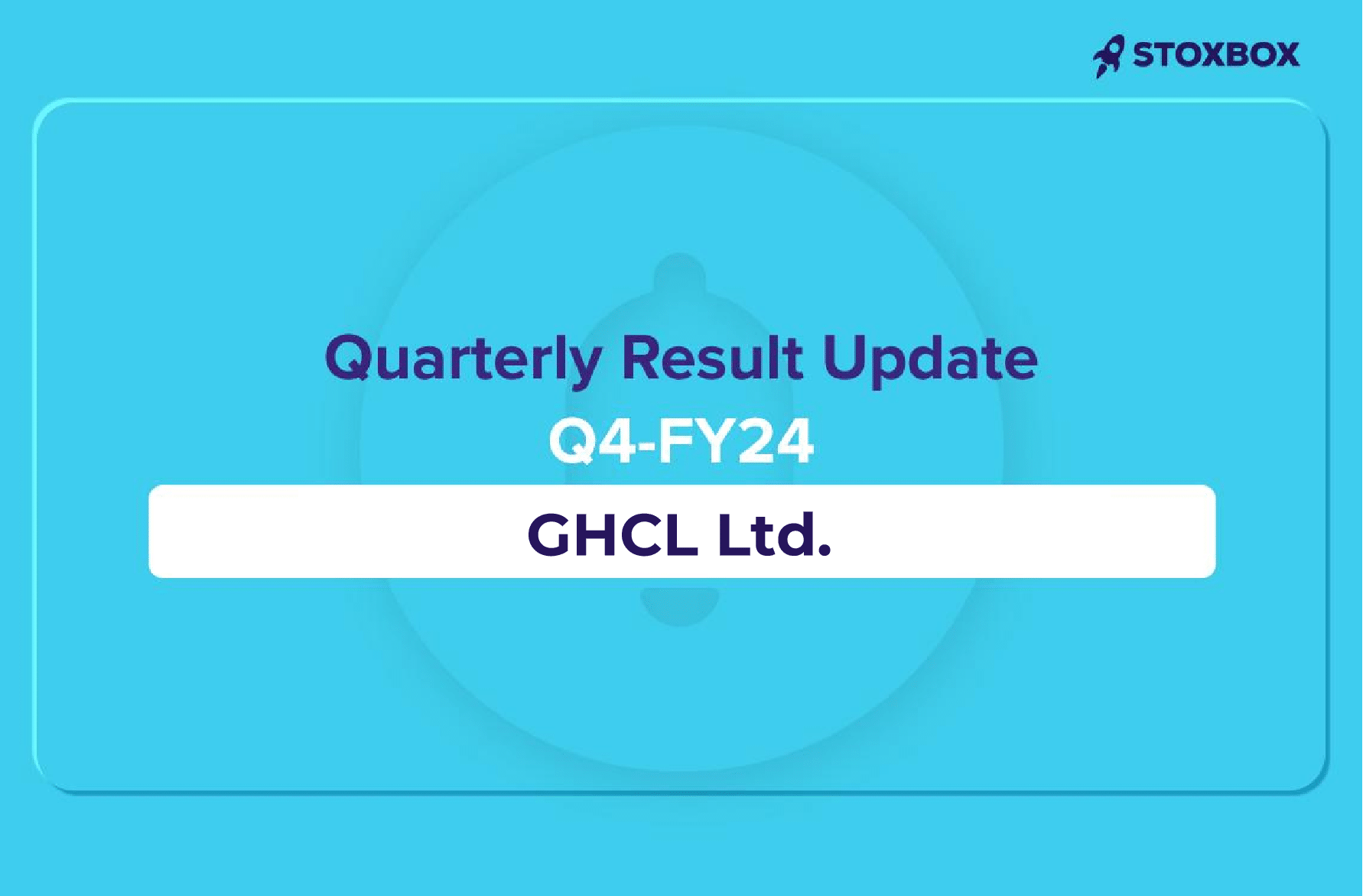Table of Contents
Sector Outlook: Neutral
Operational performance improves sequentially
GHCL reported a decrease in revenue by 26.5% compared to last year, earning Rs. 8,234 million this quarter. This drop was primarily due to lower soda ash prices caused by increased imports into India. However, revenue did rise by 3.1% from the previous quarter due to higher sales volume and reduced costs of materials. The company’s earnings before interest, taxes, depreciation, and amortisation (EBITDA) also fell by 47.1% from last year to Rs. 1,845 million, with profit margins shrinking significantly due to the lower prices. Despite this yearly drop, there was a 22.9% increase in EBITDA from the last quarter. Net profit also decreased by 50.2% compared to last year but increased by 25.0% from the previous quarter to Rs. 1,249 million. GHCL announced a dividend of Rs. 12 per share. The company anticipates challenges in the global market due to political tensions and fluctuating energy prices but expects stronger demand in India next year.
Key Concall Highlights
Soda Ash Market Outlook:
The global products market is struggling with an oversupply issue, leading to increased exports and affecting prices negatively. In the US and Europe, demand has dropped because of high inflation and generally low consumer interest. However, China is performing differently; its demand grew by about 10% this year. This growth in China is mainly due to the solar glass and lithium carbonate industries, which are doing well despite the ongoing problems in the real estate sector there.
Pricing Pressure:
Increased imports from Turkey, the US, and Russia have created an oversupply in the market, leading to lower prices. This influx, especially from Turkey, is affecting the local market significantly. While setting prices remains challenging under these conditions, producers are still managing to sell their products within the domestic market.
Demand Outlook:
The company expects better Indian demand next year and predicts dull but not worse global demand in CY24. No major capacity additions are expected in CY25 and CY26, which should help to rebalance the demand-supply situation.
End-user Segment:
The demand for detergent and chemicals in end-user segments has improved. However, solar glass faced challenges from imports.
Key Growth Areas:
The company is progressing with planned growth endeavours, including various projects and capacity expansions, which are underway and will augment capability and drive benefits in future. The company has also completed 6.7 MW of renewable energy installations.
Other Highlights:
- The company expects no major capacity additions in CY25 and CY26, which should help rebalance the demand-supply situation alongside global recovery.
- Management remains confident in the business’s long-term prospects, particularly in the solar glass and lithium carbonate segments.
- The company is currently operating at peak capacity utilisation.
- The company is actively improving cost competitiveness and efficiency through various initiatives
Valuation and Outlook
GHCL reported a decrease in revenue this year compared to last, but saw an increase from the previous quarter. This annual decrease was mainly due to more imports coming from Turkey, the US, and Russia, which lowered prices. The company predicts that soda ash prices will be affected for the next few quarters because of global oversupply, leading to more exports to Asian regions including India. However, the situation is expected to get better due to rising demand from sectors like solar glass and lithium carbonate. To address increasing local demand, GHCL is setting up a new production capacity of five lakh tons through a new project, which is close to receiving final approvals. The company is also focusing on new projects like vacuum salt production and digital improvements to increase efficiency and prepare for future growth. Despite a potential short-term dip in the soda ash industry, the long-term demand looks solid, and GHCL anticipates better demand within India next year and stable global demand in 2024.


